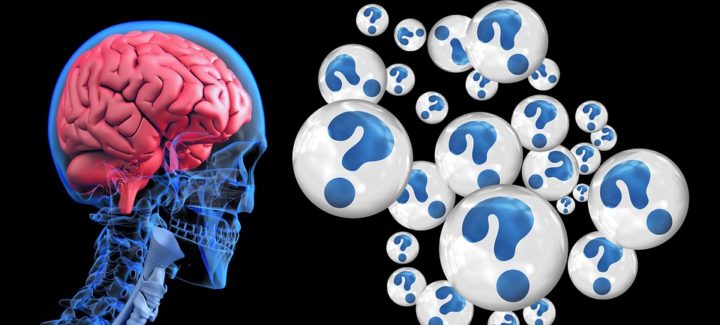Scientists are now able to label proteins in the brains of living mice who have a disease similar to Alzheimer’s disease, and have the labels remain in place. The tracer molecules have been developed at Linköping University. The new method allows the researchers to observe how harmful protein aggregates form and develop – critical questions in the research field.

Image credit: Pixabay (Free Pixabay license)
Scientists at the Harvard Medical School in the US have injected fluorescent tracer molecules from LiU into the blood of mice and shown that they can visualise protein aggregates in the brain for as long as six weeks afterwards. Protein aggregates form from certain proteins, such as amyloid beta and tau, and are characteristic of Alzheimer’s disease, Parkinson’s disease and other neurodegenerative conditions in which nerve cells die.
Much remains unknown about why certain proteins sometimes form aggregates and eventually form plaque in the brain. This is why researchers urgently need tools to follow the process. And here the question of duration is central. Using the tracer molecules available until now, researchers can obtain an image of the amount of plaque in the brain at a specific moment. The new tracer molecules developed by LiU researchers emit their signal for a prolonged period, and this opens new possibilities for research into neurodegenerative diseases.
“The greatest advantage we see in this study on mice is that it is possible to use the tracer molecules to study in real-time how the protein aggregates form. One thing we could investigate is when in the process the nerve cells start to die due to the protein aggregates”, says Peter Nilsson, professor of organic chemistry at Department of Physics, Chemistry and Biology, who has developed the tracer molecules.
The study, published in the journal Acta Neuropathologica Communications, describes how the tracer molecules labelled the protein aggregates as they formed. The collaboration with researchers at Harvard Medical School will continue, and they plan to investigate in more detail, with the aid of the LiU molecules, several of the questions for which the method opens new pathways.
“We also show in the study that we can see different types of aggregate of amyloid beta using two tracer molecules at the same time, not just the total amount of protein aggregates. This has not been possible in living mice until now”, says Peter Nilsson.
Researchers have found different forms of amyloid aggregate in the brains of people who have died with Alzheimer’s disease. They suspect that several different types of aggregate are involved in the course of the disease.
Towards clinical use
Peter Nilsson and his colleagues hope that the tracer molecules will be useful in the long run for diagnosis of patients. That is, however, not possible at the moment. This is because it is not possible to use in living people the same method to visualise the locations in the brain at which the tracer molecules have bound to protein aggregates. Thus, the researchers plan to adapt the tracer molecules such that they can be detected using a method currently used on patients. They plan to attach radioactive isotopes to the molecules, in collaboration with Uppsala University Hospital, thus making it possible to see them using positron emission tomography.
“If we can start to use these tracer molecules in patients, I believe that the first step will be to use them in clinical trials to follow the effects of different potential treatments. One interesting question to examine more closely is whether different treatments affect different forms of the protein aggregate”, says Peter Nilsson.
The article: “In vivo detection of tau fibrils and amyloid β aggregates with luminescent conjugated oligothiophenes and multiphoton microscopy”, Maria Calvo-Rodriguez, Steven S. Hou, Austin C. Snyder, Simon Dujardin, Hamid Shirani, K. Peter R. Nilsson and Brian J. Bacskai, Acta Neuropathologica Communications, published online, 8 November 2019, doi: 10.1186/s40478-019-0832-1
Source: Linköping University
